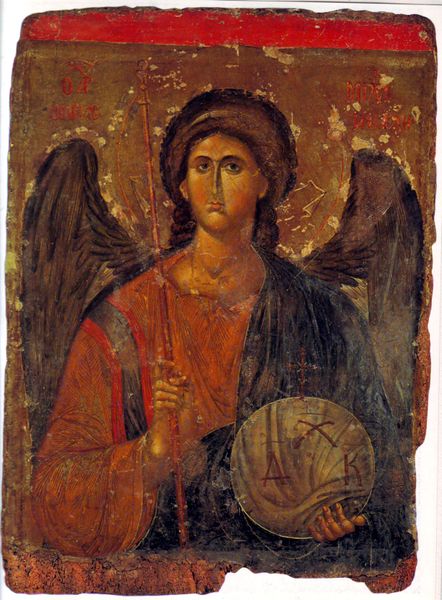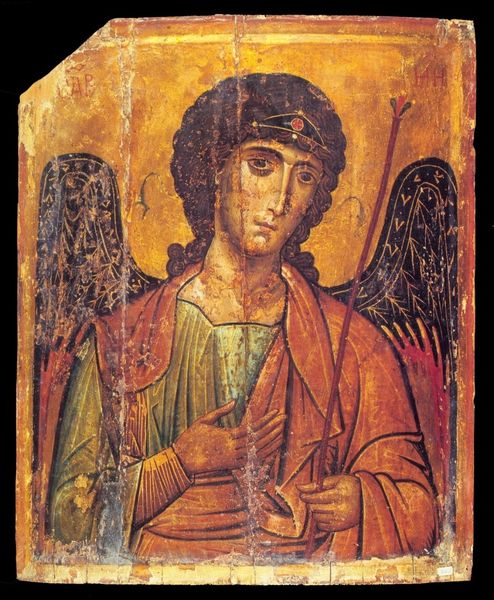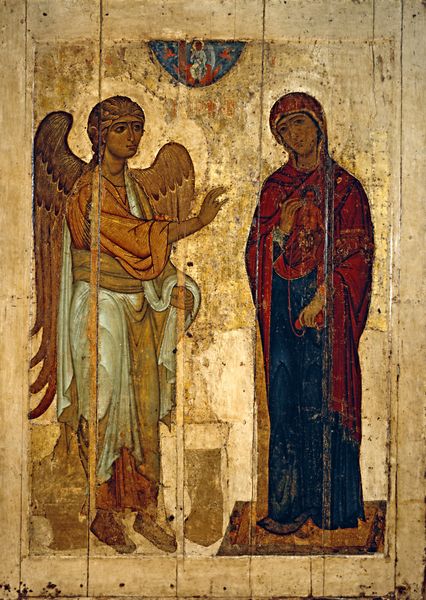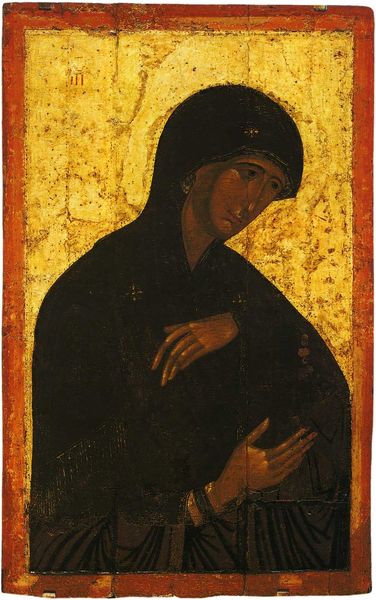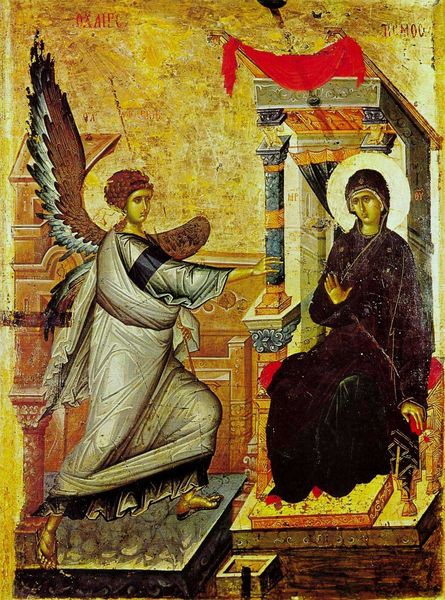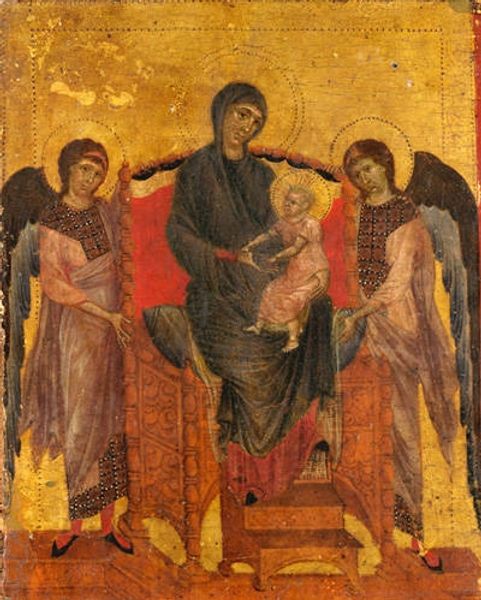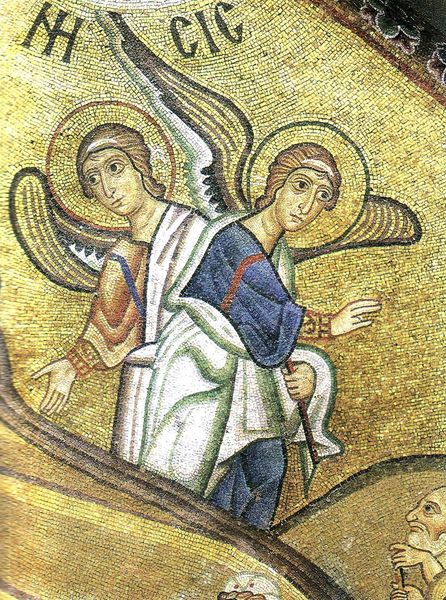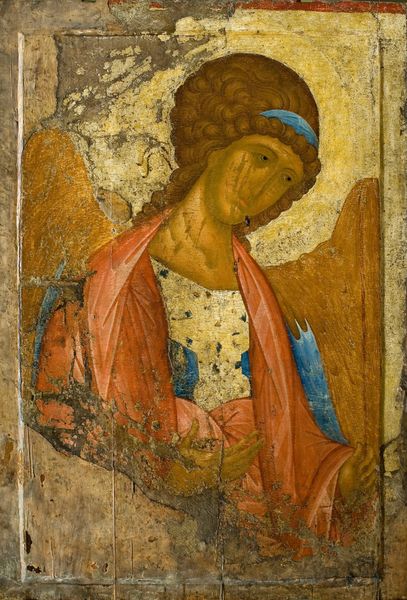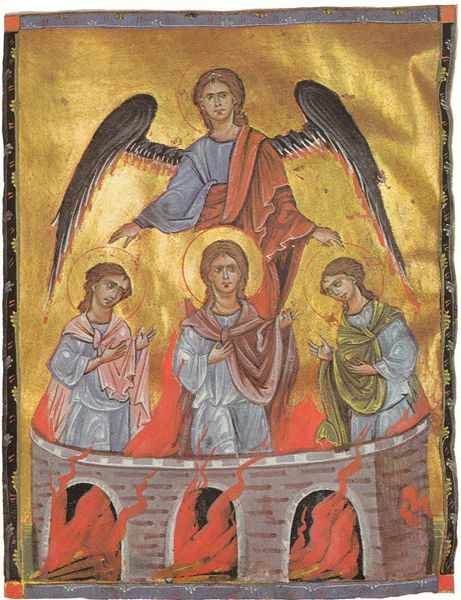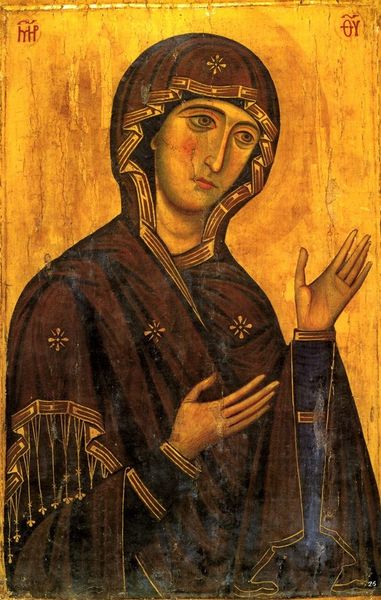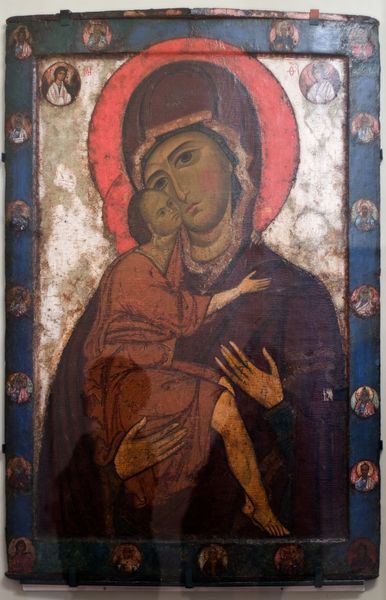
painting, oil-paint
#
portrait
#
byzantine-art
#
medieval
#
painting
#
oil-paint
#
figuration
#
oil painting
#
history-painting
#
portrait art
Copyright: Orthodox Icons,Fair Use
Editor: This is "Vysotsky chin. Archangel Michael," an oil painting from 1395 currently held at the Tretyakov Gallery in Moscow. The angel's downward gaze and somber expression give it a mood of melancholy and quiet reflection. What do you see in this piece, particularly given its historical context? Curator: Considering the historical backdrop of 14th-century Russia, the Archangel Michael takes on a powerful role. As a symbol, he represents divine protection and leadership at a time when the region faced constant external threats and internal power struggles. The deliberate use of Byzantine artistic conventions - the flattened perspective, the gold leaf, the iconic rendering of the figure - served to connect the Russian Orthodox Church with the perceived authority and legitimacy of the Byzantine Empire, what some might even consider a projection of their cultural aspirations and needs. Editor: So, the style wasn't just aesthetic; it had political weight? Curator: Exactly! It was about communicating power and stability through imagery, aligning the Russian identity with a larger, established cultural narrative. The angel's sadness, perhaps, even reflects the collective anxieties of the time. Consider how religious icons served not just as objects of devotion, but as potent symbols of cultural and political resilience, wouldn’t you say? Editor: It makes you think about how images are never neutral, especially during times of upheaval. Thanks, that definitely shifted my perspective. Curator: And it's fascinating how these medieval artists leveraged artistic styles to solidify social and political order. Always remember that museums themselves, even now, play a role in shaping how these works are understood and valued!
Comments
No comments
Be the first to comment and join the conversation on the ultimate creative platform.

